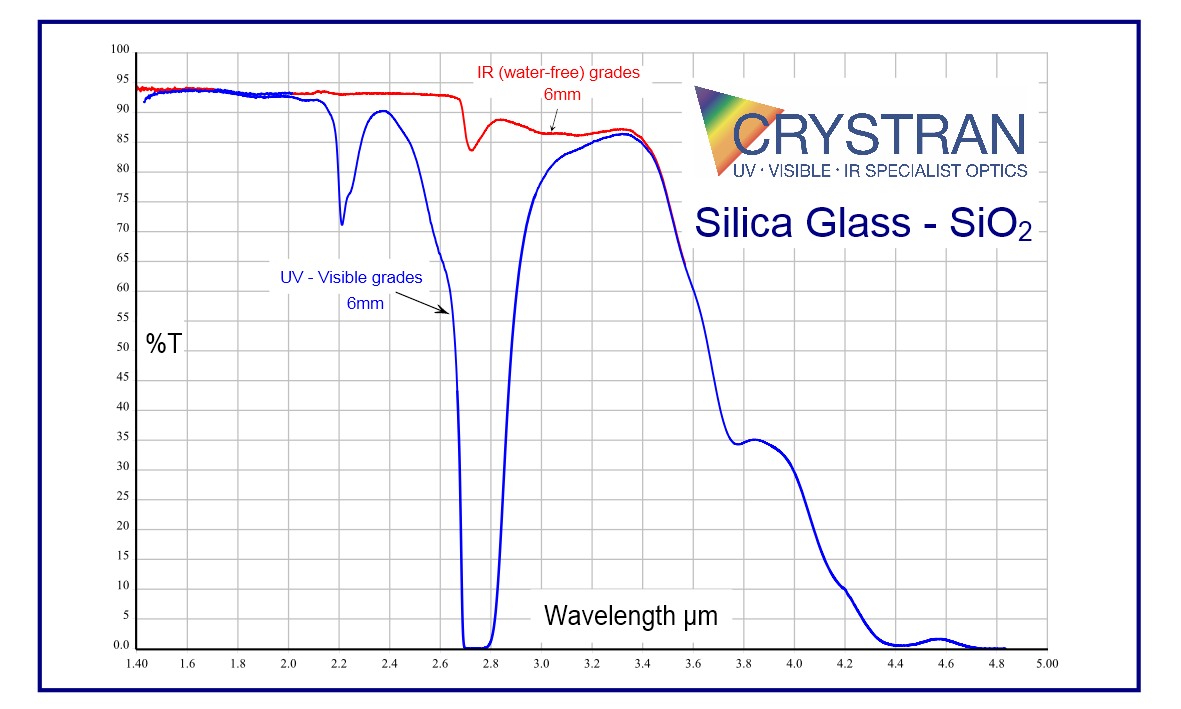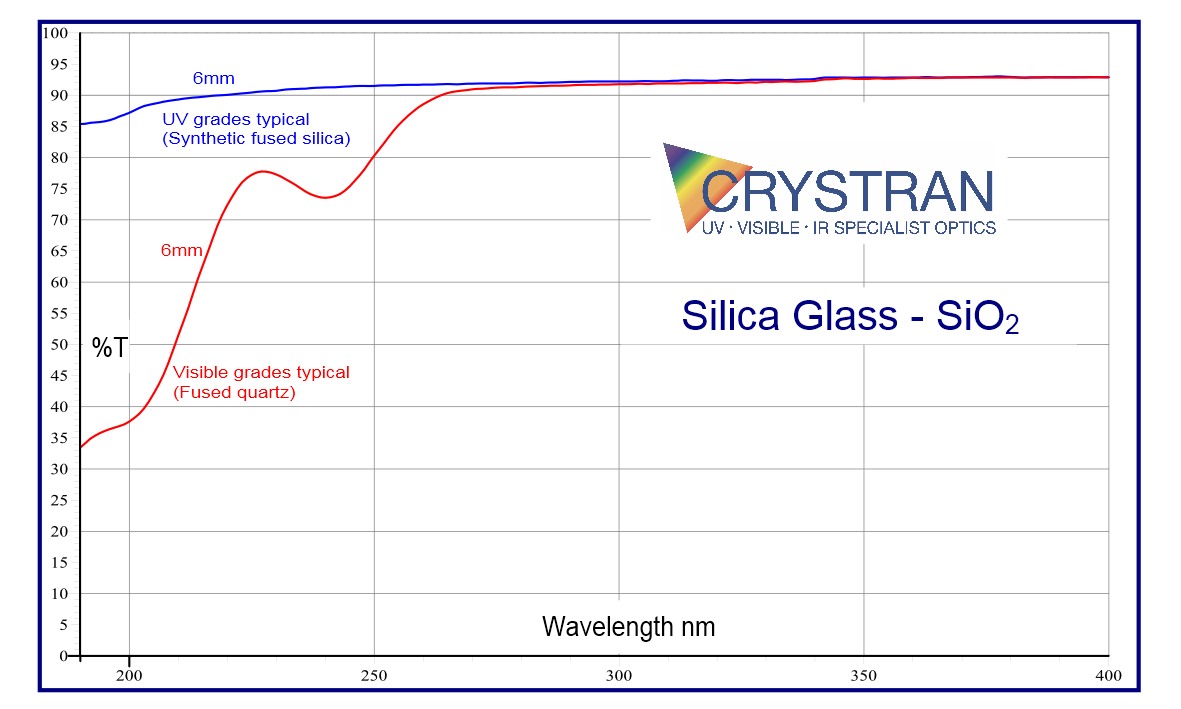

Fused Silica Glass (SiO2)
Fused Silica is a hard, high temperature pure glass. Fused Silica is used for UV and visible components. Infra-red grades of Fused Silica are available for NIR use




To download this as a Data Sheet or our SDS safety data sheet as a pdf, please click on the links at the top of the page or visit the Knowledge Centre.
Click to access our Guide to Silica Glass
Click to access current Fused Silica Stock
| µm | No |
|---|---|
| 0.20 | 1.55051 |
| 0.25 | 1.50745 |
| 0.30 | 1.48779 |
| 0.36 | 1.47529 |
| 0.40 | 1.47012 |
| 0.45 | 1.46557 |
| 0.50 | 1.46233 |
| 0.55 | 1.46008 |
| 0.60 | 1.45804 |
| 0.65 | 1.45653 |
| 0.70 | 1.45529 |
| 0.75 | 1.45424 |
| µm | No |
|---|---|
| 0.80 | 1.45332 |
| 0.85 | 1.44525 |
| 0.90 | 1.45175 |
| 1.00 | 1.45042 |
| 1.10 | 1.44920 |
| 1.20 | 1.44805 |
| 1.30 | 1.44692 |
| 1.50 | 1.44462 |
| 1.60 | 1.44342 |
| 1.70 | 1.44217 |
| 1.80 | 1.44087 |
| 1.90 | 1.43951 |
| µm | No |
|---|---|
| 2.00 | 1.43809 |
| 2.20 | 1.43501 |
| 2.40 | 1.43163 |
| 2.60 | 1.42789 |
| 2.80 | 1.42377 |
| 3.00 | 1.41925 |
| 3.20 | 1.41427 |
| 3.37 | 1.41099 |
Fused Silica is the glassy form of Quartz and is thus isotropic. Fused Silica is tough and hard and has a very low expansion. Normal varieties of Fused Silica contain water which gives strong absortion in the IR. Water-free varieties of Fused Silica are available.
REFERENCES:
(1) Handbook Optical Constants, ed Palik, V1, ISBN 0-12-544420-6
(2) Toyoda & Yabe J. Phys. D: Appl. Phys.,1 6 (1983)